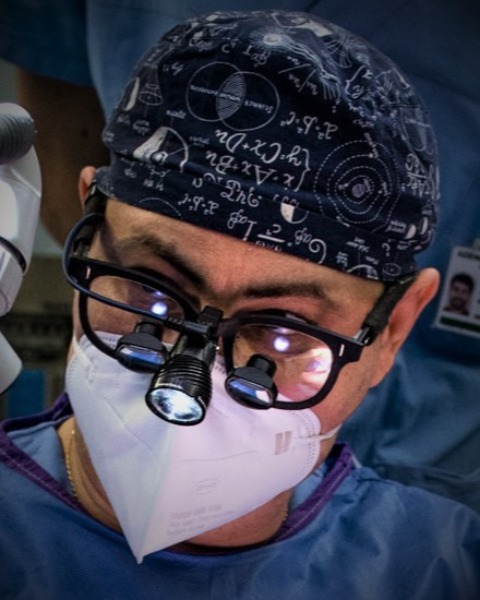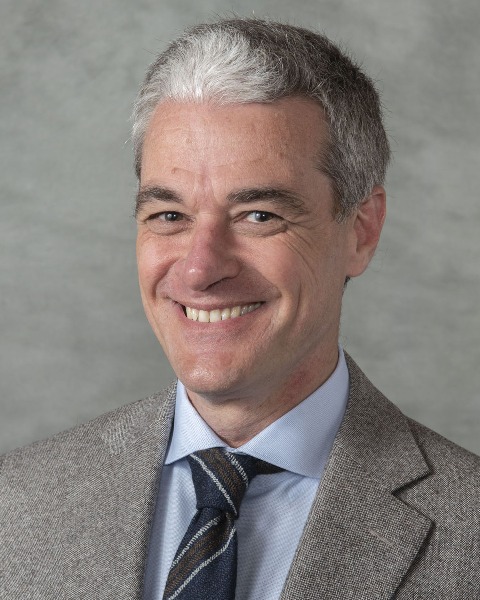Sarcoma
E428: Symptomatic Desmoid Fibromatosis: Any Association between Pain and Autoimmune Disease?

Marco Fiore, MD, FACS, FEBSh
Surgical Oncologist
Sarcoma Service, Department of Surgery, Fondazione IRCCS Istituto Nazionale dei Tumori, Milan, Italy
Milan, Lombardia, Italy- WN
Walter Sebastián Nardi, MD
Surgical Oncologist
Sarcoma Unit, Department of General Surgery, Buenos Aires British Hospital
CABA, Ciudad Autonoma de Buenos Aires, Argentina - WN
Walter Sebastián Nardi, MD
Surgical Oncologist
Sarcoma Unit, Department of General Surgery, Buenos Aires British Hospital
CABA, Ciudad Autonoma de Buenos Aires, Argentina - CC
Chiara Colombo, MD
Surgical Oncologist
Sarcoma Service, Department of Surgery, Fondazione IRCCS Istituto Nazionale dei Tumori, Milan, Italy, United States - SP
Sandro Pasquali, MD, PhD
Surgical Scientist
Molecular Pharmacology, Department of Experimental Oncology, Fondazione IRCCS Istituto Nazionale dei Tumori, Milano, Italy, United States - CF
Costanza Figura, MD
Medical Student
Sarcoma Service, Department of Surgery, Fondazione IRCCS Istituto Nazionale dei Tumori, Milano, Italy, United States - EP
Elena Palassini, MD
Medical Oncologist
Adult Mesenchymal Tumors Unit, Fondazione IRCCS Istituto Nazionale dei Tumori, Milano, Italy, United States 
Alessandro Gronchi, MD, FSSO
Chief of Surgical Department
Sarcoma Service, Department of Surgery, Fondazione IRCCS Istituto Nazionale dei Tumori, Milan, Italy
Milano, Italy
ePoster Abstract Author(s)
Submitter(s)
Author(s)
Pain is an issue in desmoid-type fibromatosis (DF). Neuro-immune interactions in chronic pain and role of immunity in DF has been documented. Immunity association both with tumor outcome and pain mechanism may be hypothesized.
Methods:
Patients with DF candidate to active surveillance (AS) between 2019-2022 were included. Autoimmune disease and pain details were collected. Pain at diagnosis was defined as any symptom within 6 mos (yes/no), and graded by visual analog scale (VAS). Tumor changes were classified by RECIST. Endpoints were pain prevalence and association with autoimmune disease and need for active treatment (AT) and painkillers (PKs).
Results:
55 patients were identified (median age 40 yrs; 42 female). Median tumor size: 55 mm (IQR, 32-80). Location: abdominal wall (n = 29), trunk (n = 13), head and neck/girdles (n = 8), extremity (n = 4) and intra-abdominal (n = 1). Prevalence of pain was 40% (22/55) with 32% VAS > 3 (median 3, IQR 2-5). Younger age (≤40 yrs; p=0.02) was associated with pain at diagnosis. No other differences were observed regarding demographics or tumor characteristics. Autoimmune disease was documented in 11/55 (20%); 6/22 (27%) with pain at diagnosis and 5/33 (15%) without pain (p=0.27). During AS, after a median FU of 25 months (IQR, 18-34), 24/55 (43.5%) RECIST PD were observed (median time: 7 months, IQR 4-11), 17/55 (31%) SD and 14/55 (25.5%) spontaneous regressions (SR). Overall, PFS at 3-years was 52.6% (95%CI, 14.6%-17.2%) with no difference between pain/no-pain (51.4% vs 53.4%, respectively; p=0.86). Interestingly, both spontaneous PR and CR were more commonly observed in patients with no pain (Figure 1A; p=0.02). No association was found between autoimmune disease and outcome (Figure 1B; p=0.27). 14/24 (58%) patients with RECIST PD received AT; 3/55 (5.5%) more patients received AT due to symptom deterioration without PD. No patient had surgery. Median time to AT was 11 mos in both patients with pain and no pain. Overall, 17/55 (31%) received PKs of which 14/17 (82%) had pain at diagnosis. Median time to PKs was 1 mos (IQR, 0-5) for patients with pain and 6 mos for those without pain. 9/55 (16%) patients required both AT and PKs, with no difference in AT or PKs according to autoimmune disease (p=0.66 and p=0.24, respectively).
Conclusions:
Pain is commonly found at diagnosis in DF patients, especially in younger age and seems to be associated with lower chance of SR. Autoimmune disease is also common, but this study was not sufficient to demonstrate an association with pain. Pathophysiology of pain in DF is worthy to be further explored, included role of immunity beyond autoimmune history.
Learning Objectives:
- Upon completion, participant will be able to describe the prevalence and characteristics of pain in desmoid-type fibromatosis.
- Upon completion, participant will be able to comment about the history of autoimmune disease in patients with new diagnosis of desmoid-type fibromatosis.
- Upon completion participant will be able to describe whether pain and autoimmune disease are related with the outcome of desmoid-type fibromatosis and the need for active treatment.
